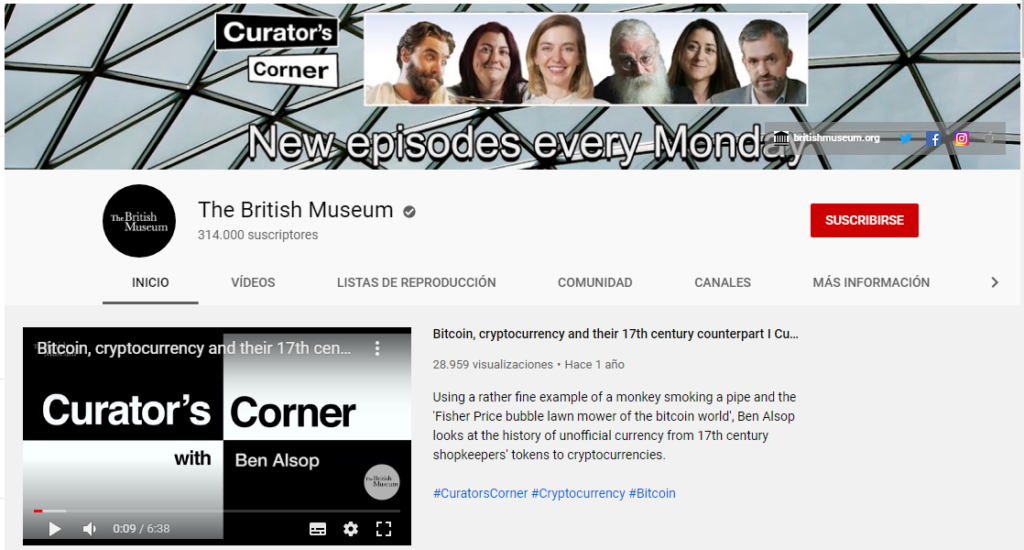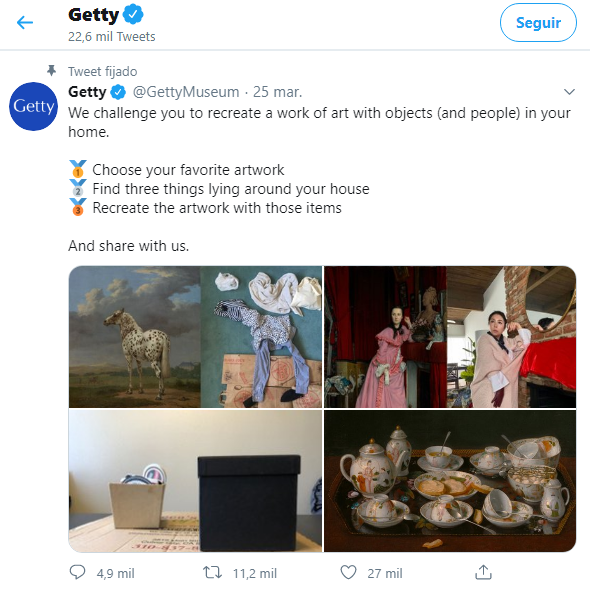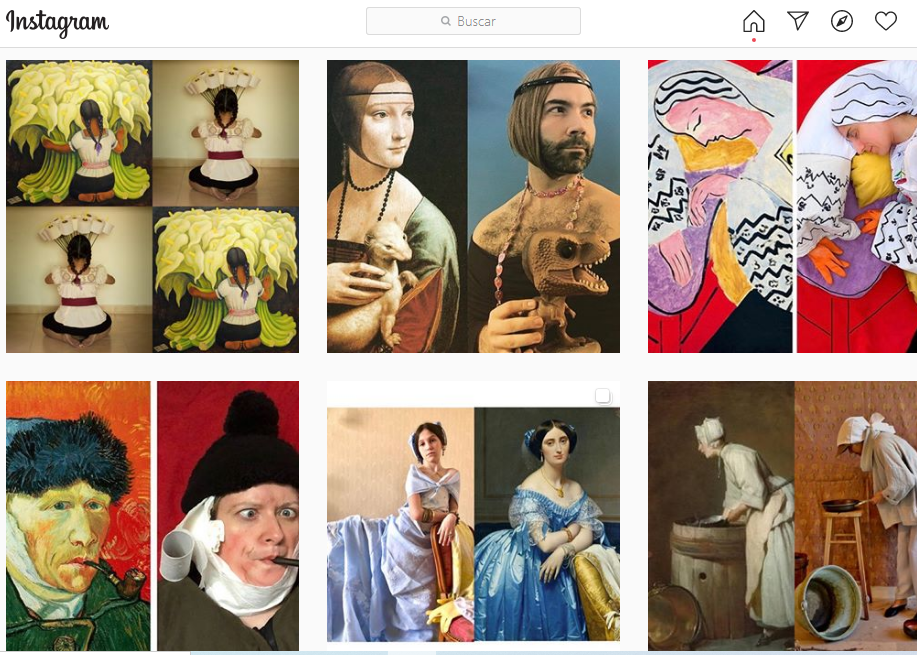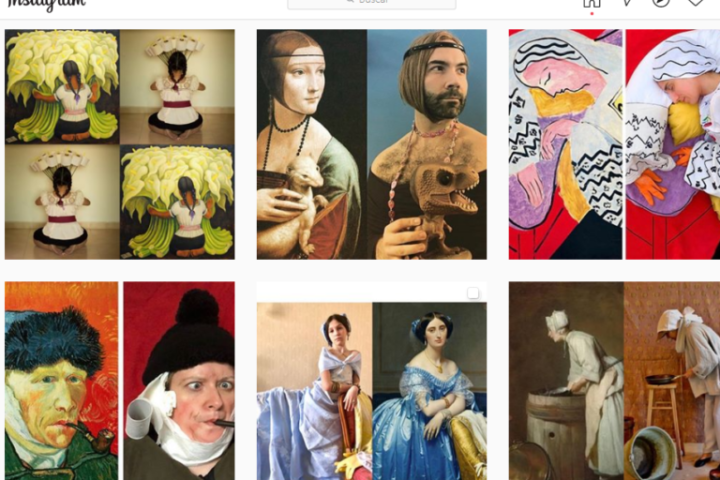
Ainhoa Simón Diez
Technical Specialist, member of the Corps of Museum Curators of Spain
Museums have no borders,
they have a network
September 21, 2020
Key words: Communication; Digital; museum; social media; COVID-19
The social distancing measures this new scenario requires have acted as a catalyst for some of the online socialising we had already caught sight of before the pandemic. Social media statistics and reports collected throughout 2019 and 2020, and published by leaders in the sector such as Hootsuite, We Are Social or GlobalWebIndex, show, among other trends, that mass communication has become less relevant when compared to other more personalised, bespoke options. This reveals an increase in the value assigned to user-generated content.
New Codes to Reinforce the Museums’ Digital Communities
When applied to museum communication, the first trend – the decrease of mass communication favouring more personalised options – requires that we become acquainted with the profile of the communities and users of each digital channel and, in turn, it demands that we adapt our content so it matches these profiles. A good example of this strategy is the British Museum’s YouTube Channel, which has a section called Curator’s Corner, chosen by users from among four different proposals pitched in 2015, when the channel was re-launched. The section has a video format reminiscent of the one that made vloggers, also known as youtubers on the platform, popular. This format has allowed curators to showcase their work in an informal and straightforward fashion, while reinventing the blog twofold: firstly, by introducing video as the cornerstone of communication, and secondly, by using platforms such as YouTube. This has allowed the museum to periodically share theme-based content geared towards a specific audience in personalised, engaging way.

Sincerity, and proximity are what social media users value most. Accounts that communicate in this manner are perceived as ‘more real,’ and users interact with them more often. An example of this is micro-influencers, that is, users who are relevant in a community that is smaller than that of their better-known siblings, the influencers. On average, a micro-influencer can accrue some 10,000 followers, whereas the most famous influencers can have well over 100 million. A small community allows a micro-influencer’s follower to truly feel they are a part of a tightly knit community and, in turn, to identify more strongly with the community’s message, which makes it more believable. While in museums this terminology is not commonly used, there are social profiles that have a considerable influence in their field. A good example is @MarDixon, the brain behind such social media campaigns as #MuseumSelfie and #AskACurator, among others. The success of social profiles beyond the museum world reveals that, in the universe of social media, users are not an audience and do not behave as such. Thus, museums must strive to become relevant to their followers; success is no longer gauged by the number of interactions, but rather by the quality of the communication in question.
New Ways of Engaging the Newer Generations

The second trend mentioned at the start of this article – the greater importance given to the content generated by the user – is driven by a generation native to the digital world that has embraced social media to an extent that that will affect their future in unforeseen ways. Gen Z has chosen video as their go-to format and has applied the foundations of ephemeral culture to their content; they have taken words and replaced them with emojis while making creativity their calling card.
These changes have been key to the success of certain social networks, such as TikTok, Instagram, F3, or Snapchat. These platforms place the user under the limelight: no longer limiting themselves to consuming content, they actually have become content generators. Viral challenges are the best example of a result of these trends.
Clearly, rethinking a museum’s digital communication strategy entails opening up new channels and new modes of expression that will allow the institution to reach out to the younger generations, encouraging them to create content. A good example of abiding by these new rules was the #GettyMuseumChallenge, started by the Los Angeles Getty Museum, which, during lockdown and by using the aforementioned hashtag, challenged users to recreate works of art at home. The idea drew from the @tussenkunstenquarantaine Instagram account, where online users collaborated by uploading their versions of works of art with the #tussenkunstenquarantaine and #betweenartandquarantine hashtags. The MuseumWeek added this challenge to their 2020 program with their #CultureInQuarantine hashtag.

These emerging social trends enable new ways of establishing a connection with users. They also offer an opportunity to reinvent museum communication, by developing a new relationship with the visitor, one that calls for more participation and visitor decision-making.
These changes must be implemented as part of a carefully planned digital strategy that relies on suitable human and technological resources. Otherwise, museums will struggle to adapt to the changes social media require.
References and resources
Hootsuite. The Global State of Digital in 2019: https://hootsuite.com/resources/digital-in-2019
Hootsuite. Social Media Trends 2020: https://hootsuite.com/es/research/social-trends
We Are Social y Hootsuite. Digital 2020 Global Overview Report: https://wearesocial.com/digital-2020
GlobalWebIndex. Social media marketing trends in 2020: https://www.globalwebindex.com/reports/social
@tussenkunstenquarantaine’s Instagram account: https://www.instagram.com/tussenkunstenquarantaine/
_________________
Opinions expressed in the article do not commit ICOM in any way and are the responsibility of its author.
To participate in our newest ICOM Voices call for contributions, click here.
